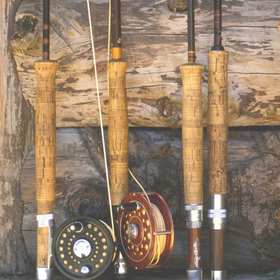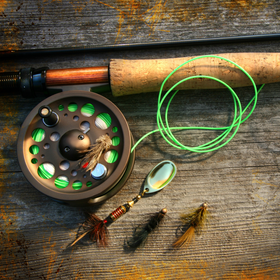Fly fishing for Steelhead can be traced back to the Eel River, in Northern California, during the late 1800’s.. And many of the first Steelhead pattern’s roots can be traced back to the same era as well. There were a few problems during this time, and none more crucial than lack of material with which to tie flies. Standard featherwing trout patterns became the foundation of many steelhead patterns. Other patterns were adopted from English trout patterns and Atlantic Salmon patterns. Many of today’s most popular Steelhead patterns can be traced back to these beginnings. Green Butt Skunk, Skykomish Sunrise, Purple Peril, to name just a few all hail back to these early beginnings.
I keep several fly boxes stocked just for steelhead, I always think I’ll leave a few home, before I head out, but rarely do. How many flies you decide to carry is up to you, but there a few things to consider when selecting an assortment of flies. The most popular colors for Steelhead flies are as follows: black, orange, purple, red, and chartreuse. The key is to have a variety of colors in the fly box before heading out. Although the old adage "bright days, bright flies, dark days, dark flies,” is a decent starting place. One also remember the time of day one will be fishing. Summer steelheading is done mostly in the darker hours, and therefore dark flies are popular like the aforementioned Green Butt Skunk, and its variations.
As fall begins and water becomes murky and bright marabou patterns are often the ticket. And in the winter I use lots of egg-sucking leeches, bunny leeches, and bright egg patterns like the Sucker Spawn. As water becomes more murky, the brighter the pattern one can get away with.
Nymphing becomes more and more popular every year for steelhead, which ignites the old argument whether or not steelhead eat once they enter the river. It seems more certain in the Great Lakes region that they are thought to, while the Pacific steelhead is thought not to. The extra space taken up with roe or sperm production results in a very shrunken stomach. Nevertheless more and more angler’s are using stonefly nymphs, hare’s ear, and caddis larva to catch steelhead in the west. Matching the hatch is not as crucial as it is in trout fishing, nevertheless fishing a pattern that represents a common food source in the river being fished is necessary. Nymphing for Steelhead is more successful further inland, as it is thought Steelhead become interested in feeding after having been in the river system for awhile.




